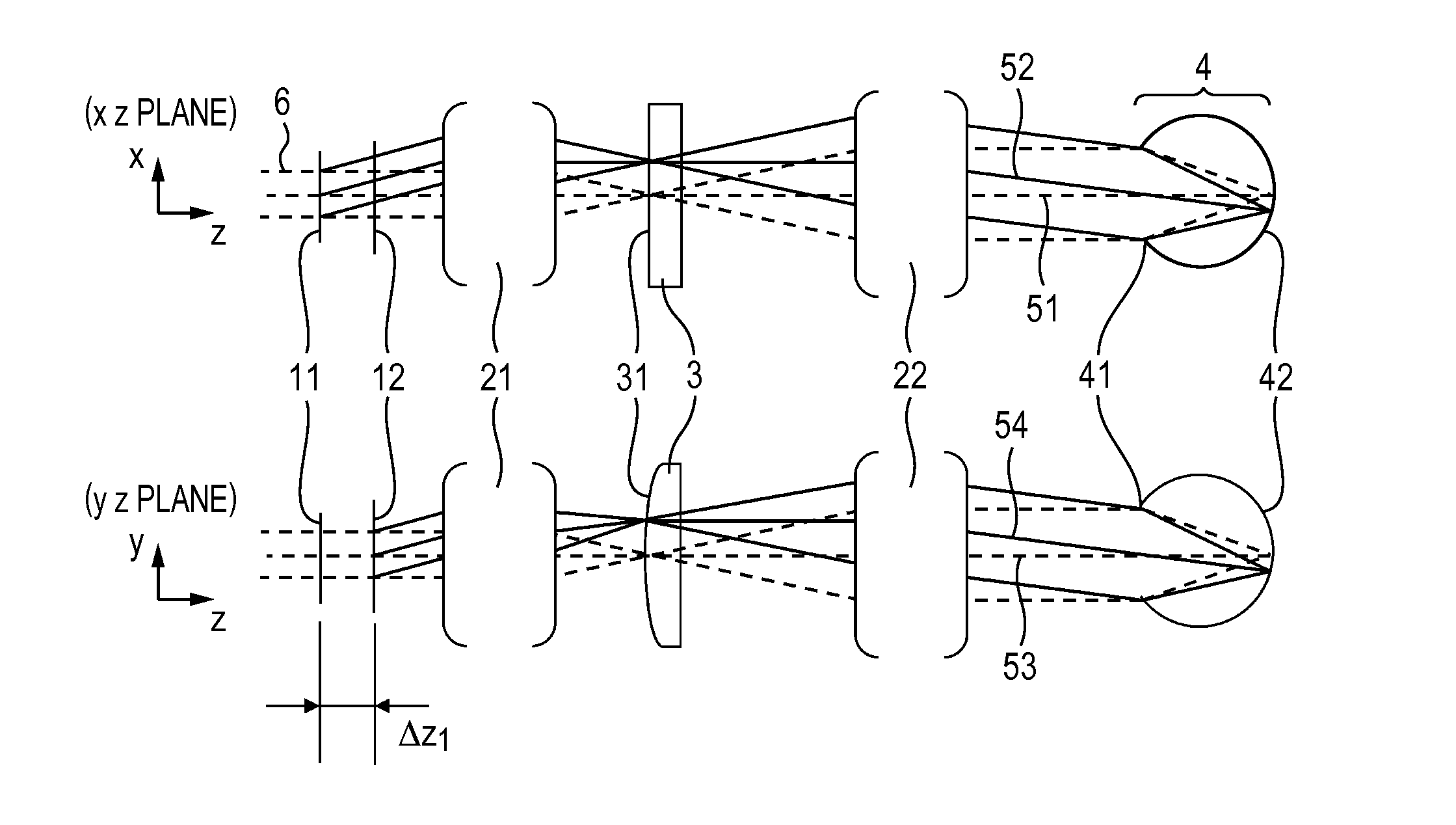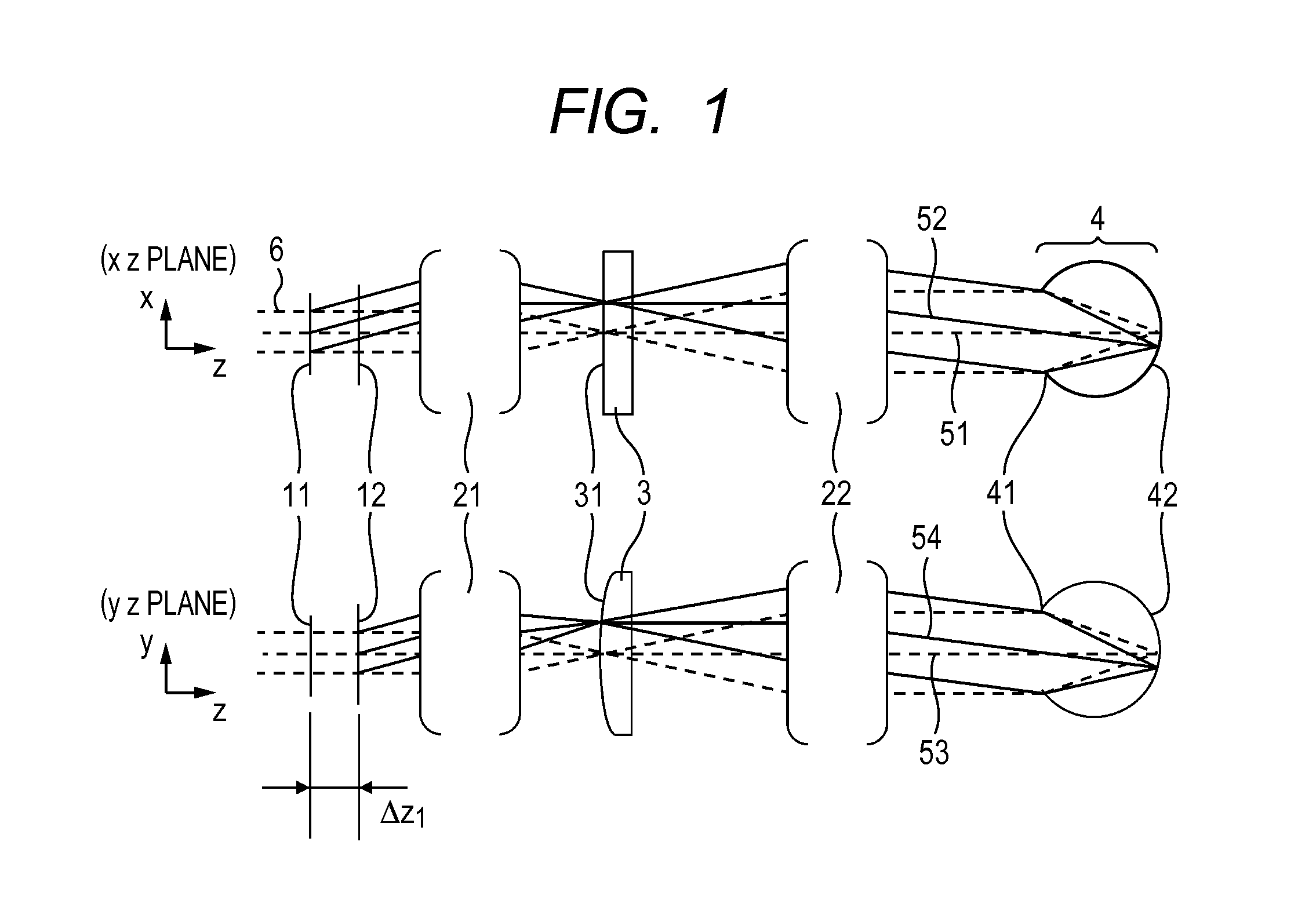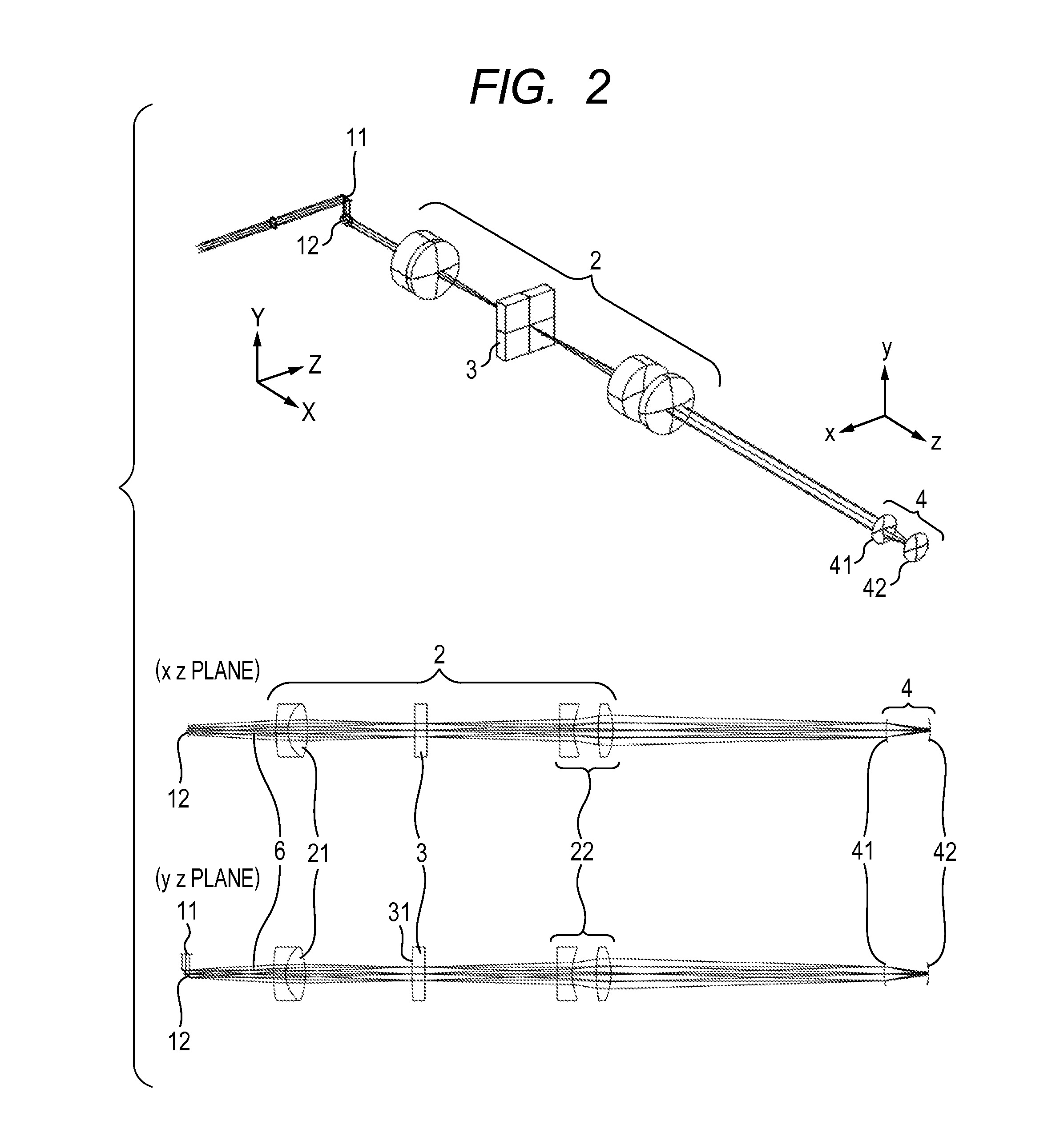Ocular optical system
a technology of optical system and optical lens, applied in the field of ocular optical system, can solve the problems of high-order aberration in the wavefront of transmitted light, and the inability to condensate the spot on the retina to a desired diameter, so as to reduce the deviation of the incident position
- Summary
- Abstract
- Description
- Claims
- Application Information
AI Technical Summary
Benefits of technology
Problems solved by technology
Method used
Image
Examples
first embodiment
[0031]FIG. 1 illustrates a cross section of an ocular optical system according to this embodiment. A beam 6 that is emitted from a light source (not shown) and is collimated is deflected in two-dimensional direction by two one-dimensional scanner mirrors 11 and 12 (corresponding to one-dimensional beam scanning units in the embodiments) disposed close to each other, and is led to an iris 41 of an eyeball 4 by an ocular optical system 2. Here, the sentence “two one-dimensional scanners 11 and 12 are disposed close to each other” in this embodiment means that the two one-dimensional scanners 11 and 12 are disposed close to each other without operational interference therebetween. The sentence also includes the case where there is no optical element having an optical power between the two one-dimensional scanners 11 and 12, and the two one-dimensional scanners 11 and 12 are disposed at such a distance that the shift amount described above can be compensated by a cylindrical lens that i...
second embodiment
[0047]Next, a second embodiment is described below in the case where a scan type retinal inspection instrument is supposed, which measures reflection light from the retina. In the case of the structure illustrated in FIG. 2, the cylindrical surface 31 has a relationship nearly optically conjugate to the retina 42. When the beam 6 passes along the optical axis, the reflection light from this cylindrical surface 31 is also detected. The reflectance of the retina is approximately 10−3%. Therefore, the reflected and the backscattering light is very weak while the reflectance of the lens surface is actually a little lower than 0.1% even if an antireflection coating is formed. Therefore, the intensity of undesired reflection light from the lens is much higher. Therefore, when the beam is scanned in a two-dimensional manner so as to form an image, the undesired reflection light causes a strong ghost image to be a serious image failure.
[0048]Therefore, in this embodiment, as illustrated in ...
third embodiment
[0052]A third embodiment is described with reference to FIG. 7. As described above, when a thick beam enters so as to form a spot diameter that is as small as a few microns on the retina, the spot is disturbed by aberration of the eyeball optical system so that a desired condensing state cannot be obtained. Therefore, it is necessary to use a compensation optical system. In this case, it is well known that an inconvenience occurs in a transparent type coaxial optical system using lenses in the type where the light irradiating the retina for obtaining an image is also used as irradiation light for measuring the wavefront. This is because that in the case where a Shack-Hartmann type wavefront sensor is used as the wavefront detector, for example, not only the reflected and backscattering light from the retina but also reflection light from each lens surface enter the wavefront sensor as undesired light. As described above, the reflection light from the lens surface has much larger int...
PUM
 Login to View More
Login to View More Abstract
Description
Claims
Application Information
 Login to View More
Login to View More - R&D
- Intellectual Property
- Life Sciences
- Materials
- Tech Scout
- Unparalleled Data Quality
- Higher Quality Content
- 60% Fewer Hallucinations
Browse by: Latest US Patents, China's latest patents, Technical Efficacy Thesaurus, Application Domain, Technology Topic, Popular Technical Reports.
© 2025 PatSnap. All rights reserved.Legal|Privacy policy|Modern Slavery Act Transparency Statement|Sitemap|About US| Contact US: help@patsnap.com



